- EXPLORE FURTHER: Cabin crew member discloses the most contaminated spot on an aircraft – surprising your assumptions.
The world's most bustling airport is poised for a significant transformation with the introduction of an entirely new terminal designed to accommodate millions additional travelers.
The airport is renowned as the location of the planet’s largest indoor waterfalls and has previously been crowned the world’s best.
Now Changi Airport in Singapore has announced intentions to construct Terminal 5, expected to boost passenger numbers by an impressive additional 50 million, atop the current traffic of around 90 million annually.
T5 will also be connected to the existing Terminal 2, which is home to Singapore Airlines .
Once finished, the terminal will increase the airport’s global connections from 170 to 200 cities.
The plans unveiled by the airport reveal an extensive infrastructure slated for the terminal building, anticipated to have a price tag of £7 billion.
The massive terminal will feature expansive glass ceilings and walls designed to let in an abundance of natural light, thereby enhancing the travel experience for passengers.
Similar to the current terminals at Changi Airport, no detail will be overlooked when it comes to amenities and aesthetics, featuring indoor gardens and vertical forests integrated into the structure.
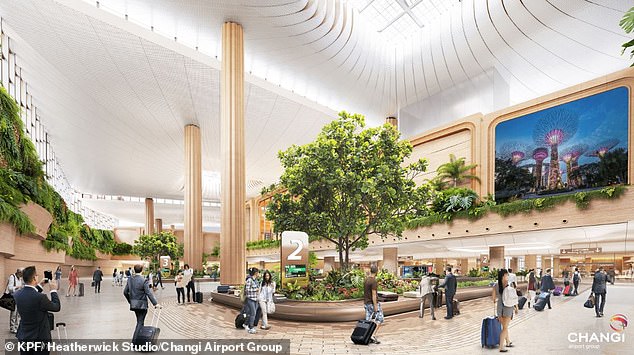
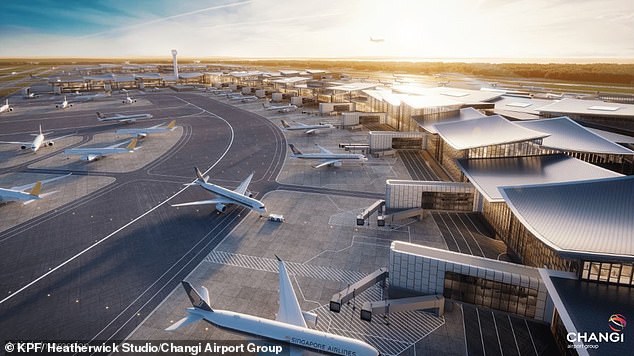
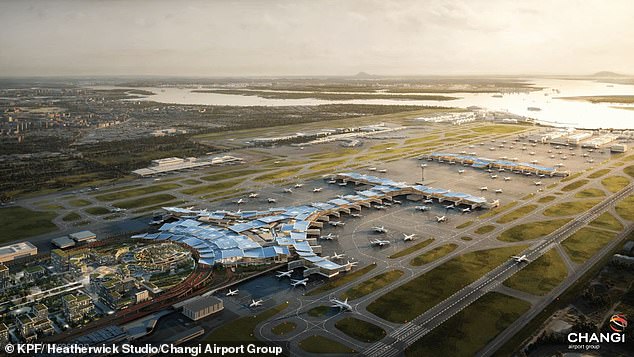
Self-service kiosks and touch-free stations will be implemented, enabling a quicker and smoother journey for both outbound and inbound travelers.
A specialized transport hub will also be built beneath the terminal, accommodating trains, buses, and taxis.
The development work has commenced at the 2,670-acre location, and upon completion, the new airport's area will nearly double in size compared to what it currently is.
In order to accommodate extra travelers, authorities plan to transform an old military airstrip into a third runway exclusively for civilian planes.
It is anticipated that the terminal will become completely functional by the middle of the 2030s; however, the third runway might be accessible as early as 2027.
Meanwhile, The busiest airport in Dubai formerly announced its intentions to close down. As it expands with an investment of £28 billion to boost its capacity to accommodate up to 260 million passengers each year.
Dubai International Airport, referred to as DXB, serves as a significant transit point and an essential stopover for numerous British travelers embarking on lengthy journeys to the Middle Eastern metropolis annually.
However, its head, Paul Griffiths, revealed that all operations will ultimately be transferred to the more modern Al Maktoum International Airport (DWC) over the next few decades.
Situated 22 miles away from the city center and 38 miles from DXB, Al Maktoum International Airport commenced operations in 2010. However, a fresh DWC terminal is slated to debut in 2032, with complete expansion plans extending well into the 2050s.
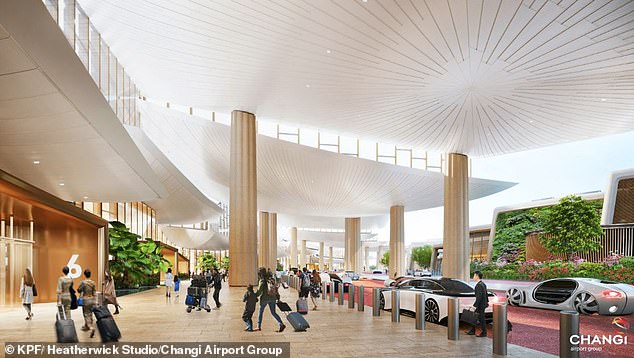
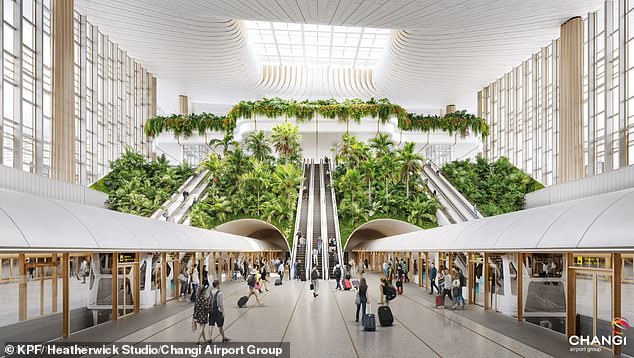
As per Griffiths, Dubai International Airport, Which initially opened in 1960, is approaching the conclusion of its 'effective operational lifespan.' '.
At the Arabian Travel Market conference last month, he stated: "It doesn't make much sense to run two significant hubs so near to each other."
We will transfer all services to DWC. By that time, each asset at DXB will approach the conclusion of its operational lifespan, making it economically unviable to keep DXB running without significant investment.
Currently, DXB ranks as the globe's second-busiest airport after managing a record-breaking 92.3 million travelers in 2024. However, it leads the way globally when considering only international passenger traffic, according to reports. Aviation Week .
Read more
Posting Komentar